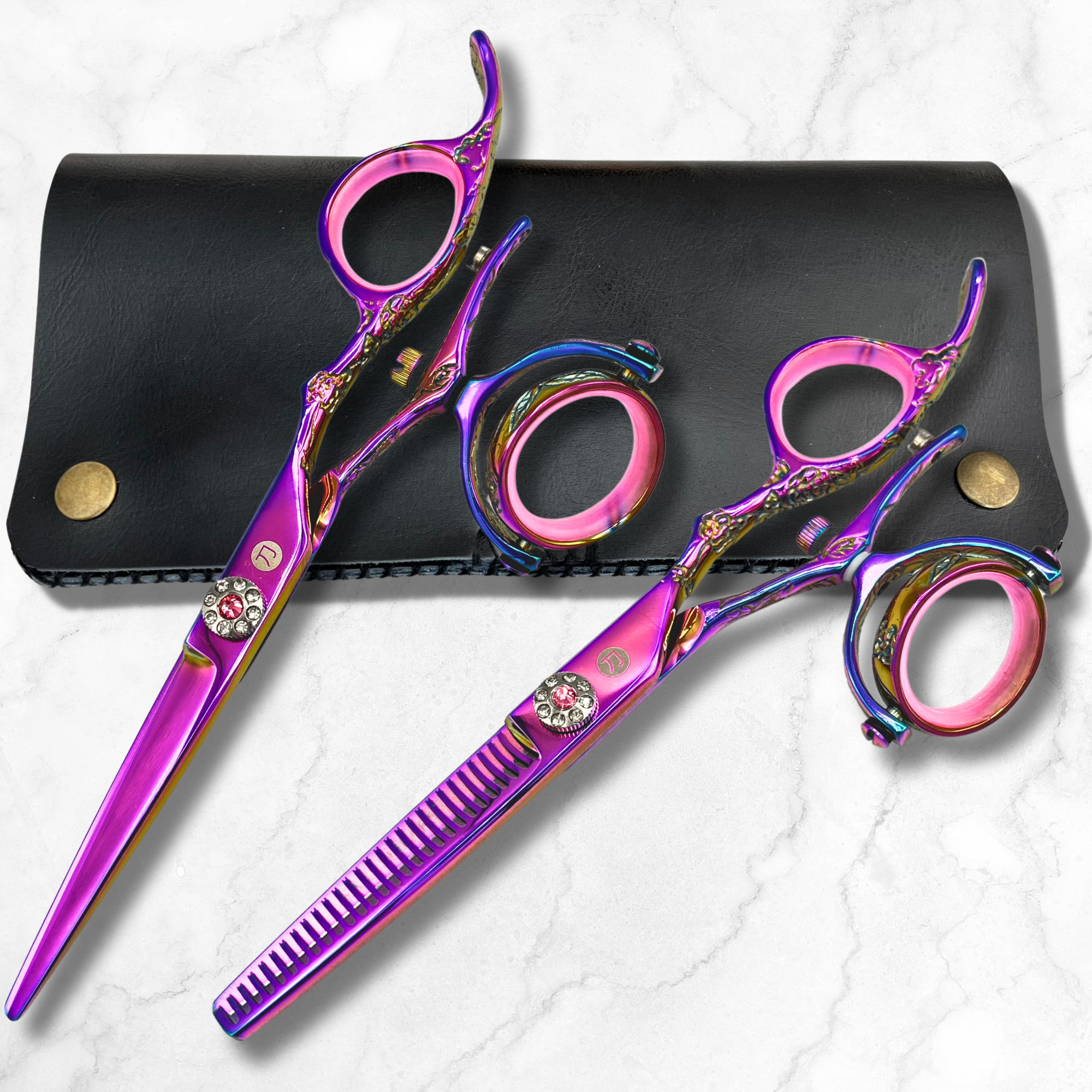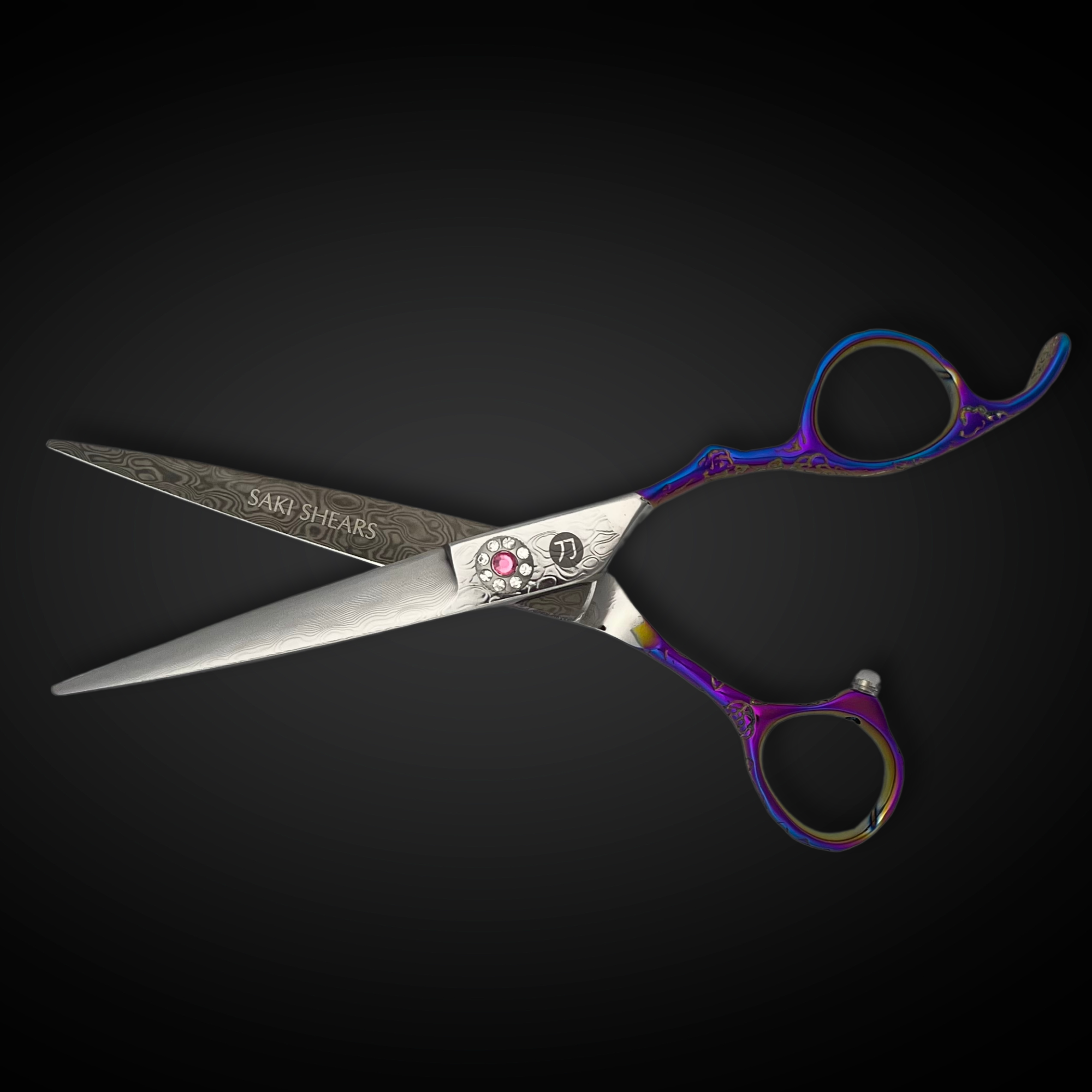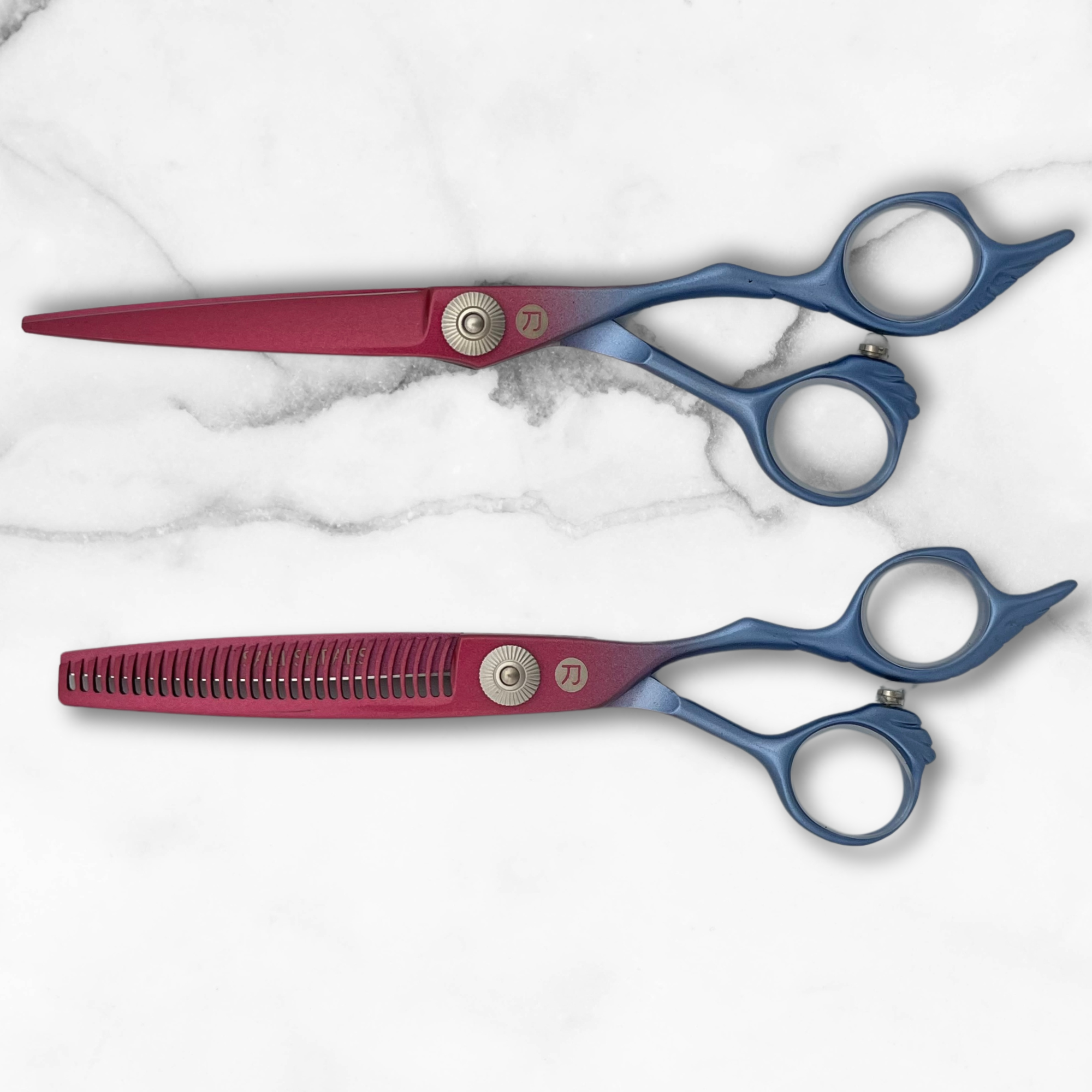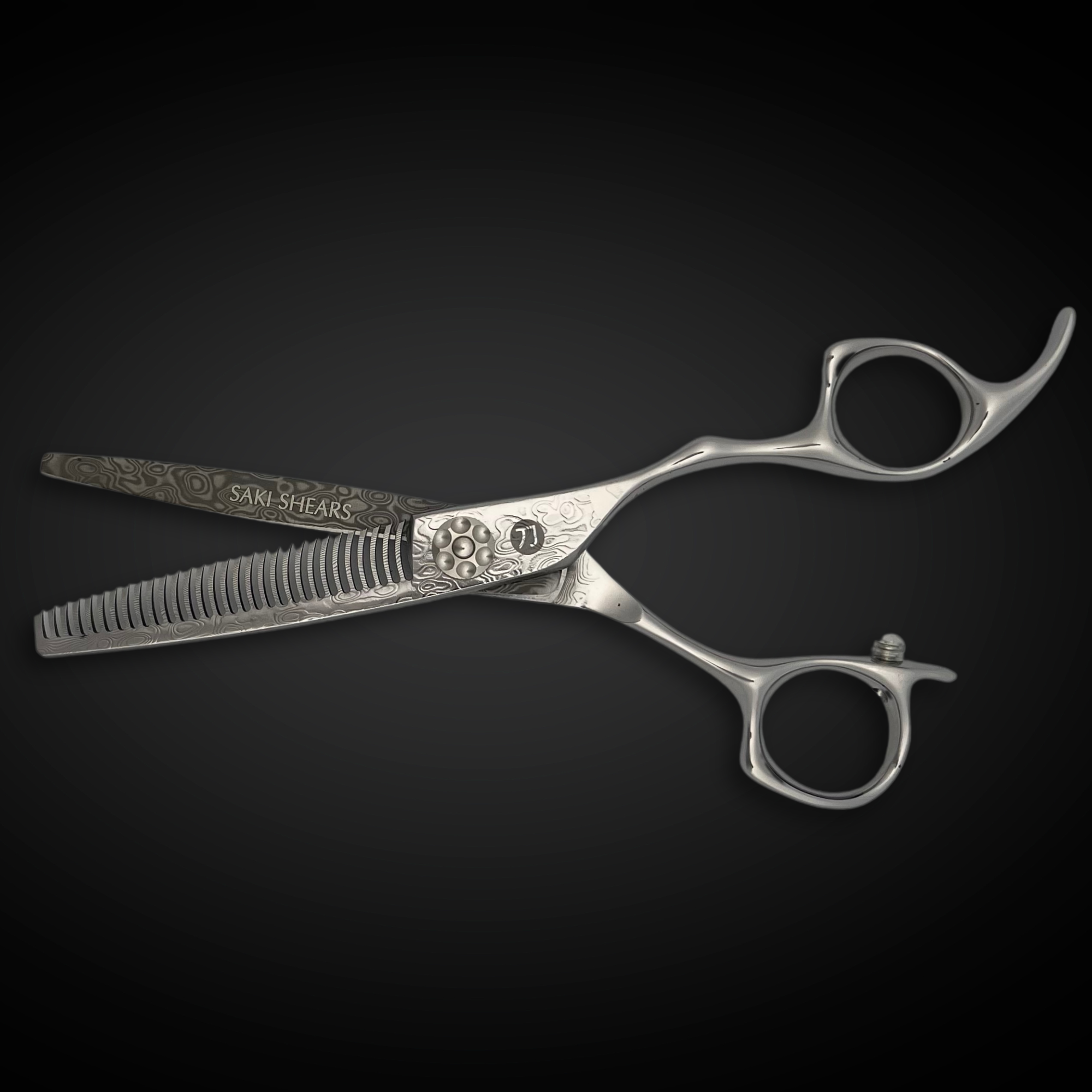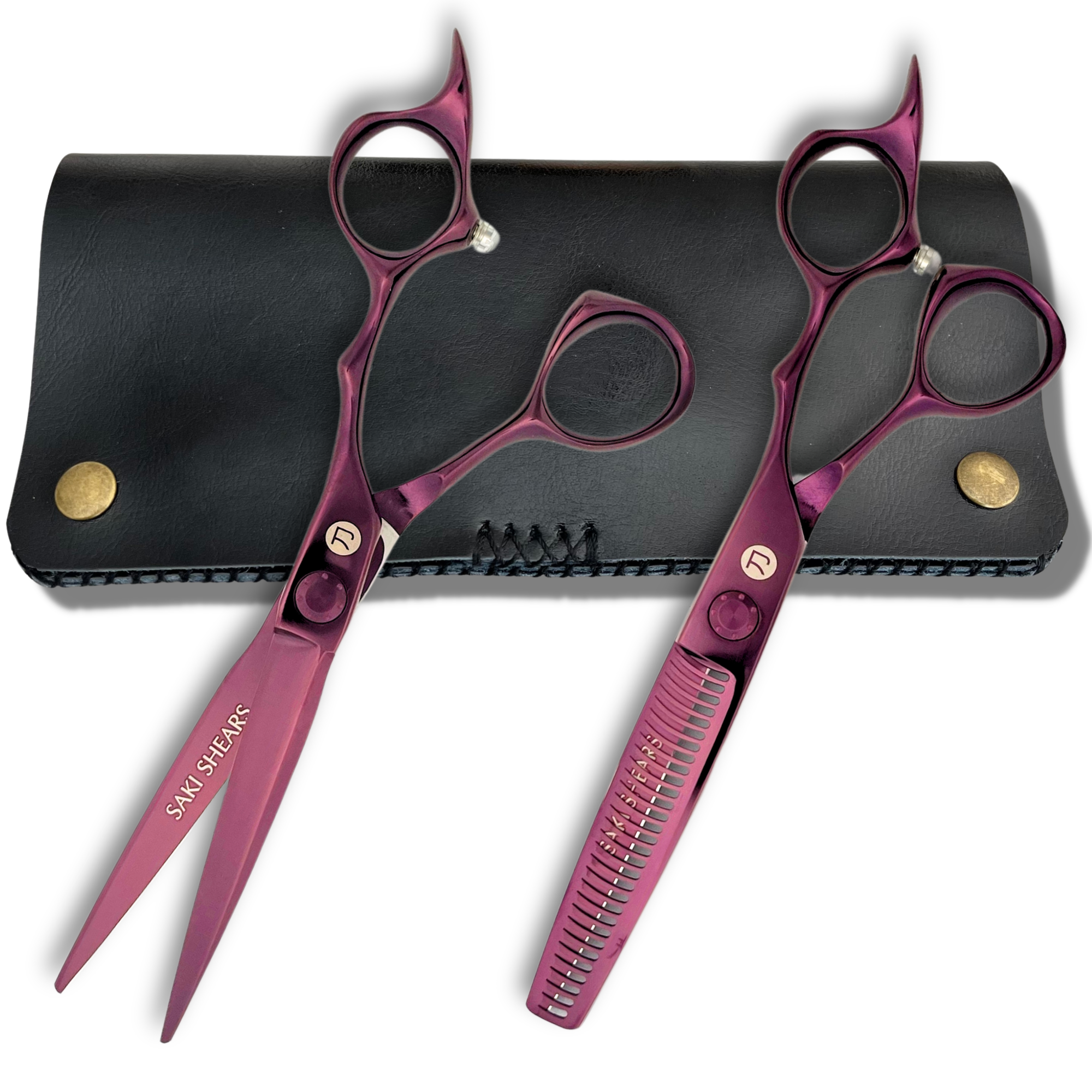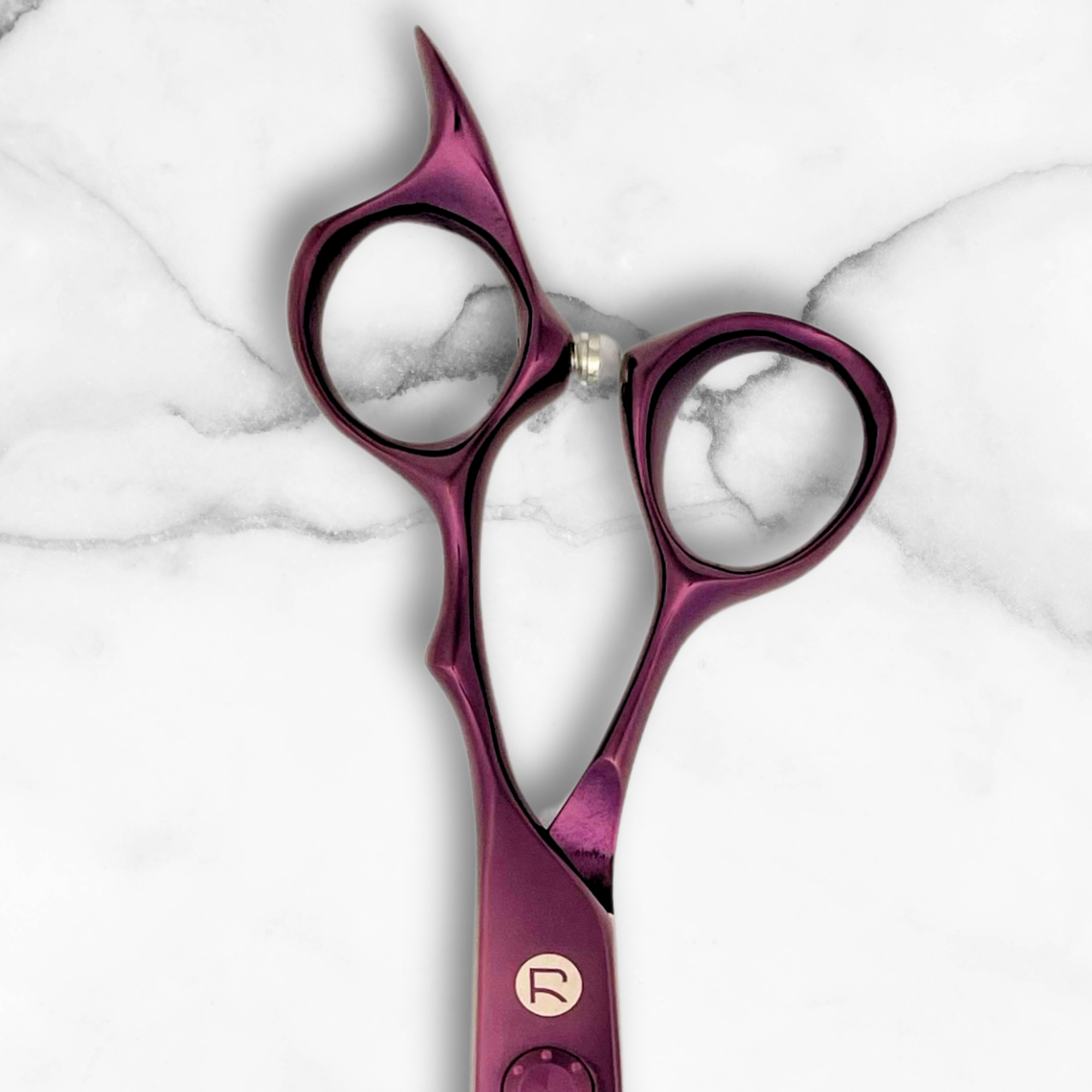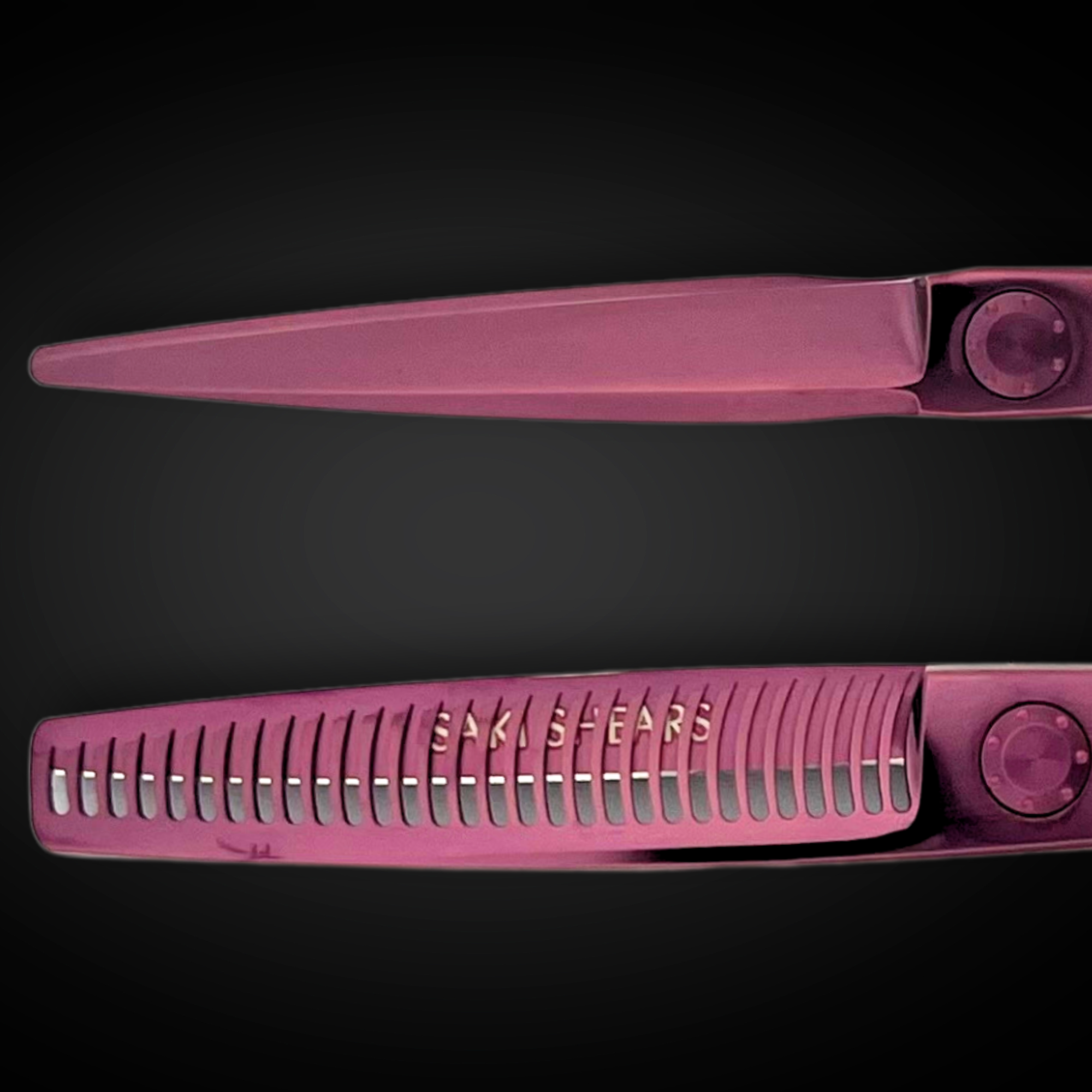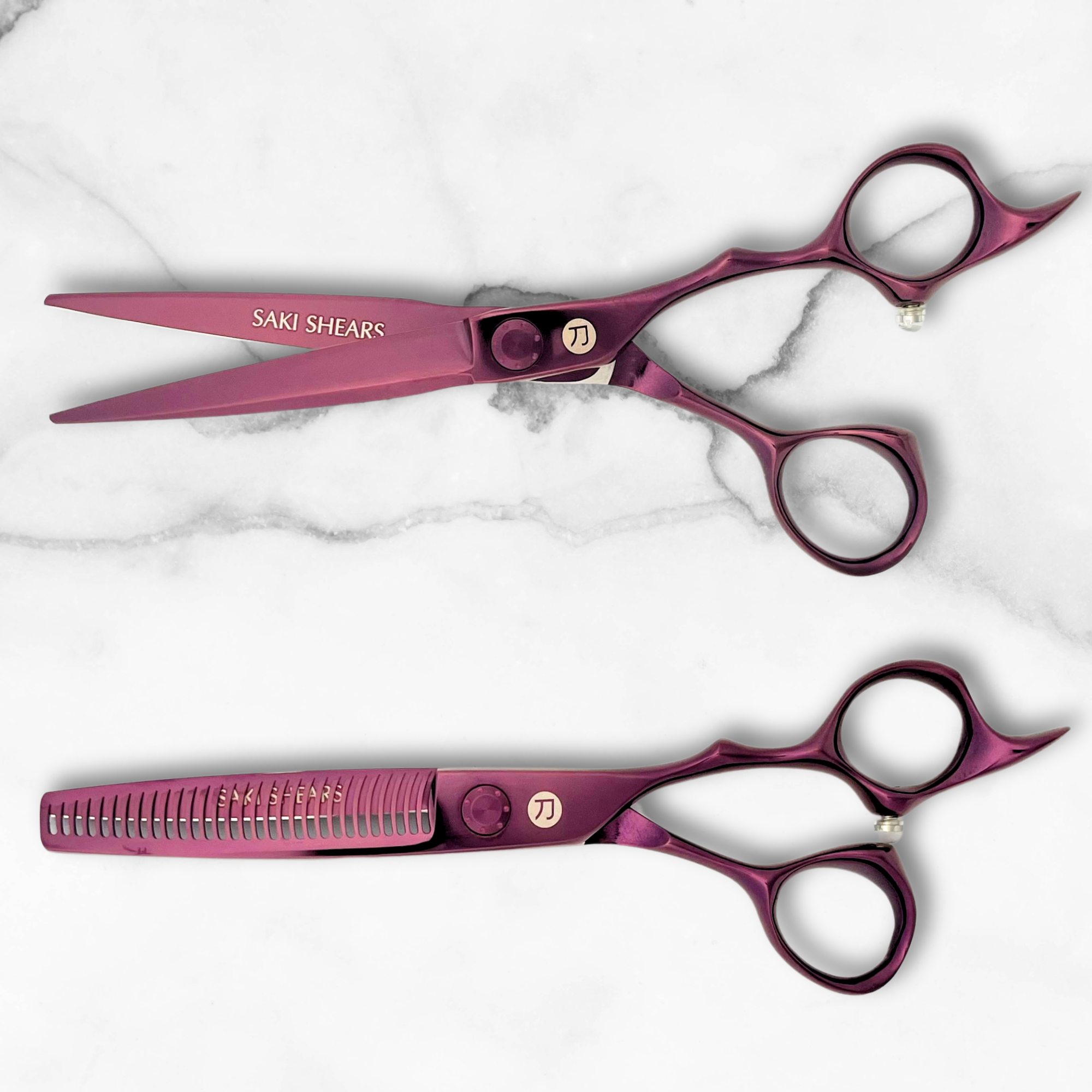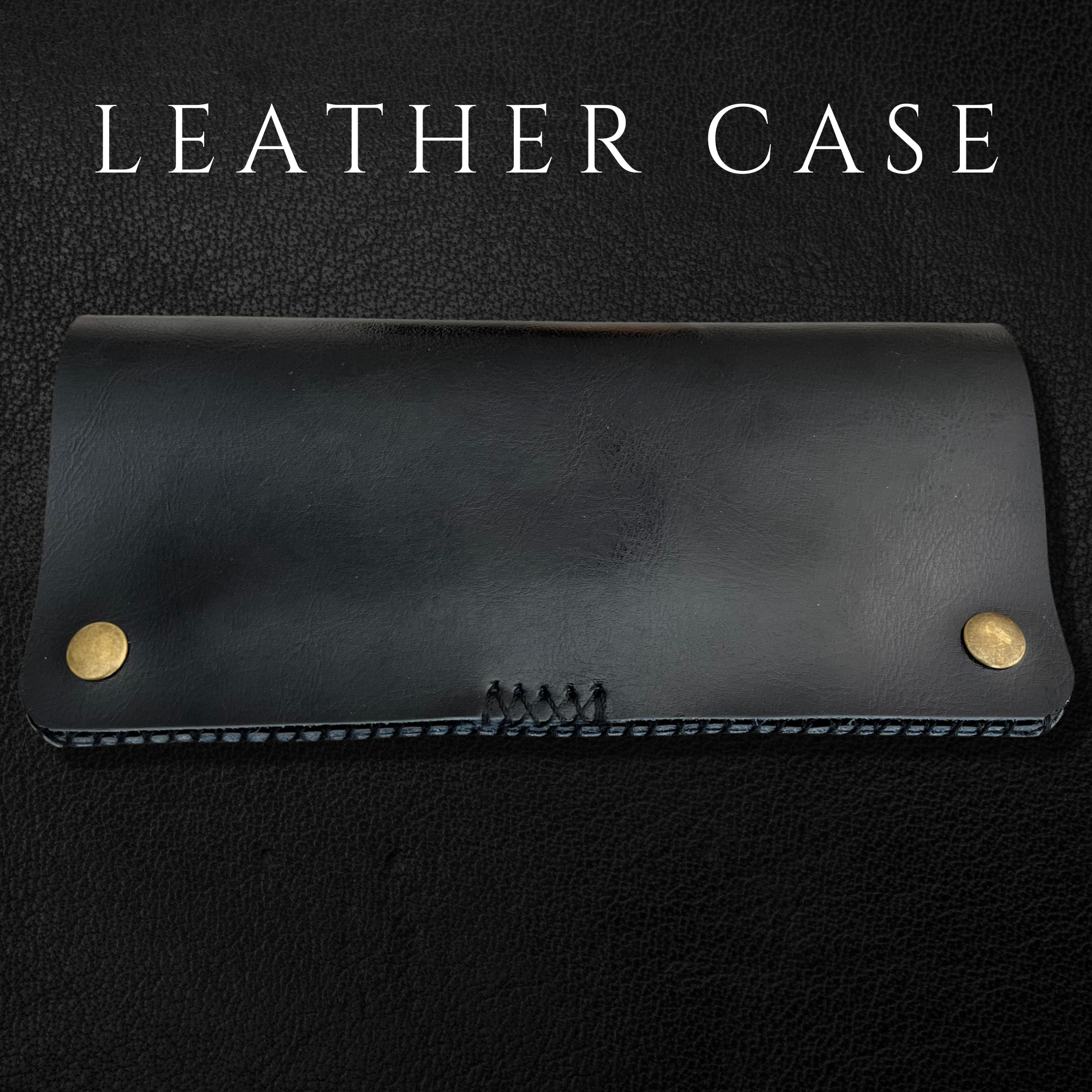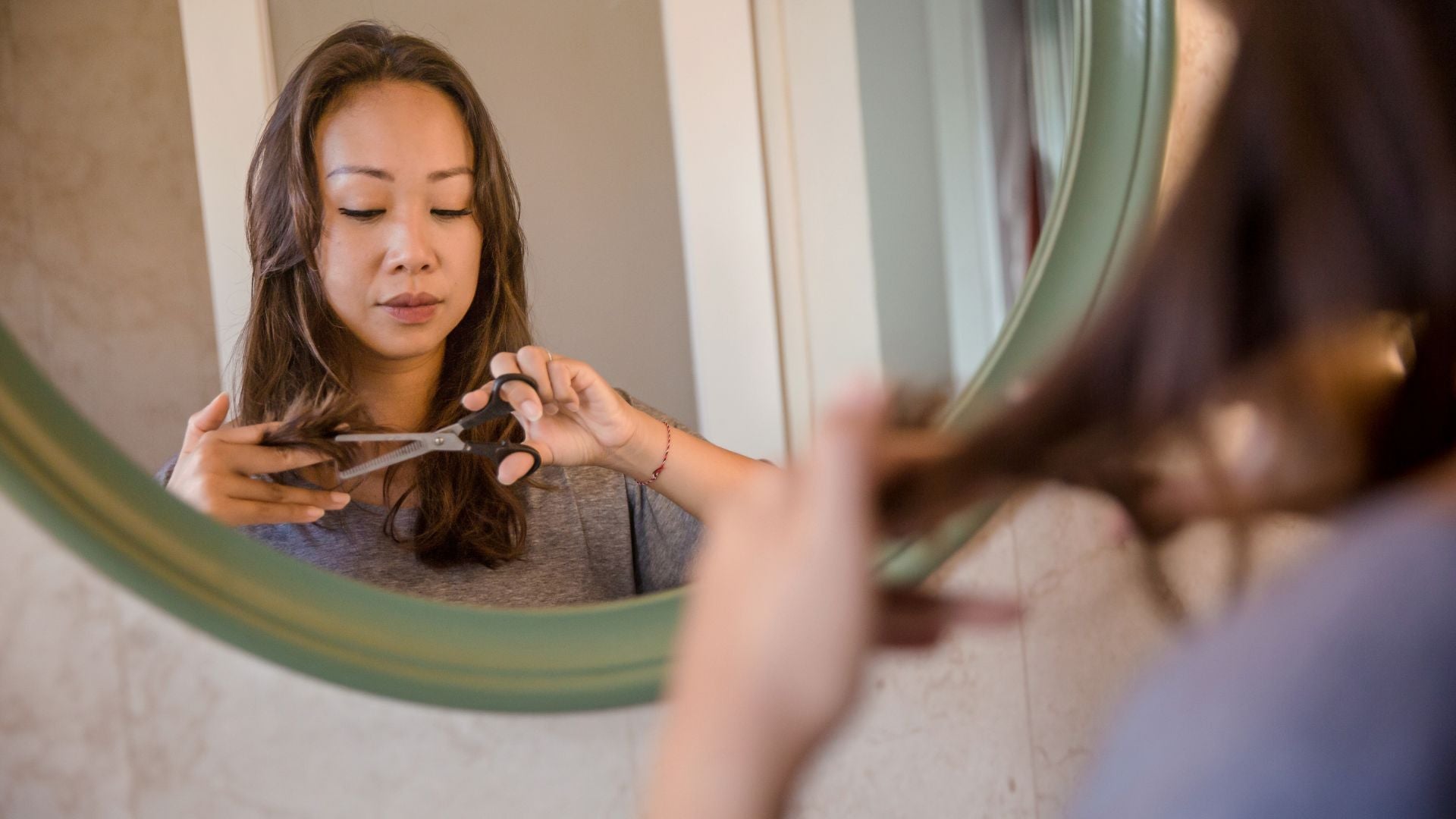Face Framing Layers: The Ultimate Guide to Flattering Your Features
What are Face Framing Layers?
Face framing layers are a versatile and stylish hair cutting technique designed to accentuate and complement the unique features of an individual's face. This technique involves cutting layers around the face, starting at the chin or cheekbones and gradually tapering down, following the contour of the face. This results in a hairstyle that not only adds depth and dimension to one's hair but also highlights the facial structure, creating a flattering and personalized look.
The Benefits of Face Framing Layers
There are numerous benefits associated with face framing layers. Firstly, they offer an excellent way to add movement and texture to various hair types, giving the hair a lively and dynamic appearance. This can be particularly beneficial for those with fine or limp hair, as the layers create an illusion of volume and fullness. Secondly, face framing layers can soften strong facial features and create a more balanced appearance, making it a suitable choice for individuals with various face shapes. Lastly, this hairstyle is low maintenance and can be easily adapted to suit different styles, from casual to formal occasions, making it an ideal option for those seeking a versatile and modern haircut.
How to Determine if Face Framing Layers are Right for You
Determining if face framing layers are the right choice for you primarily depends on your hair type, facial features, and personal preferences. To make this decision, consider the following factors:
-
Hair type: Face framing layers work well with most hair types, including straight, wavy, and curly hair. However, individuals with extremely thick or coarse hair may need to consult a professional stylist to achieve the desired effect.
-
Facial features: As mentioned earlier, face framing layers can soften strong facial features and create a more balanced appearance. Analyze your face shape and consider whether this style would complement your unique features.
-
Personal preferences: Think about your lifestyle, personal style, and the amount of time you're willing to dedicate to hair maintenance. Face framing layers require minimal upkeep, making them an attractive option for those with busy schedules or a preference for low-maintenance hairstyles.
By taking these factors into consideration, you can make an informed decision on whether face framing layers are the perfect choice for your next haircut.
Understanding Face Shapes
Identifying Your Face Shape
To choose the most flattering face framing layers for your unique features, it's essential to first identify your face shape. There are six primary face shapes, each with its distinct characteristics:
-
Oval: An oval face shape is characterized by a slightly rounded hairline, balanced proportions, and a slightly narrower chin compared to the forehead. This face shape is considered the most versatile when it comes to hairstyles, as it suits most styles.
-
Round: Round faces are characterized by full cheeks, a rounded hairline, and a rounded jawline. The width and length of a round face are roughly equal, creating a circular appearance.
-
Square: A square face shape features a strong, angular jawline, a broad forehead, and relatively straight sides. The width of the forehead, cheeks, and jaw are nearly equal, giving the face a boxy appearance.
-
Heart: Heart-shaped faces are wider at the forehead and taper down to a narrow, pointed chin. This face shape often has prominent cheekbones and may also feature a widow's peak hairline.
-
Long: Long or rectangular faces are characterized by an elongated appearance, with the forehead, cheeks, and jawline having roughly equal widths. This face shape often has a high forehead and a strong, angular jawline.
-
Diamond: Diamond face shapes are narrow at the forehead and jawline, with wide, prominent cheekbones. This face shape is characterized by a pointed chin and an angular appearance.
How Face Shape Affects Layering Choices
Understanding your face shape is crucial when selecting face framing layers, as it can significantly impact the overall appearance and balance of your features. Here's how your face shape can affect your layering choices:
-
Oval: With its balanced proportions, an oval face shape can accommodate a wide range of layering styles. However, avoid adding excessive volume at the crown, as this can elongate the face.
-
Round: To create the illusion of a longer and more angular face, opt for face framing layers that begin below the chin and extend downwards. This will help to elongate the face and draw attention away from its roundness.
-
Square: For square faces, it's essential to soften the strong, angular features. Choose layers that start around the jawline and taper down, adding softness and movement around the face.
-
Heart: Heart-shaped faces benefit from layers that begin around the chin or lower to help balance the width of the forehead and the narrowness of the chin. Longer layers also work well to create a more harmonious appearance.
-
Long: To add width and balance to a long face shape, select face framing layers that start at cheekbone level and gradually taper down. This will create the illusion of a fuller and more balanced face.
-
Diamond: For diamond faces, choose layers that start around the chin or lower to soften the angular features and draw attention to the cheekbones. Opt for styles that add volume around the jawline to create a more balanced appearance.
By considering your face shape when selecting face framing layers, you can create a flattering hairstyle that enhances your unique features and complements your overall appearance.
Face Framing Layers for Different Hair Types
A well-executed face framing layering technique can work wonders for various hair types. However, it's essential to tailor the approach to your specific hair type to achieve the most flattering and manageable results.
Straight Hair
For individuals with straight hair, face framing layers can add movement, texture, and volume. Opt for long, gradual layers that start at the chin or below, as this will create a soft, subtle effect that complements the hair's natural texture. Avoid overly short layers, as they may appear choppy and make the hair appear thinner. Additionally, incorporating side-swept bangs or wispy fringe can further enhance the face framing effect.
Wavy Hair
Wavy hair lends itself well to face framing layers, as they can enhance the hair's natural movement and create a more dynamic appearance. Choose layers that begin at the cheekbone or lower, depending on your face shape, and gradually taper down. This will create a balanced and harmonious look while showcasing your hair's natural waves. Be mindful of the layer length, as shorter layers may cause frizziness or a lack of definition in the waves.
Curly Hair
Face framing layers are an excellent choice for curly hair, as they can add structure and dimension to the curls while maintaining their natural shape. Opt for layers that start at the cheekbone or jawline and taper down, as this will create a flattering silhouette and minimize the appearance of a triangular shape that may occur with longer, unlayered curls. Ensure that your stylist is experienced with curly hair and uses proper cutting techniques, such as cutting each curl individually, to avoid disrupting the curl pattern.
Coily Hair
For those with coily hair, face framing layers can create a flattering shape and enhance the hair's natural texture. Opt for layers that begin around the jawline or lower, depending on your face shape, and gradually taper down. This will create a balanced and structured silhouette that showcases your hair's unique coils. It's crucial to work with a stylist experienced with coily hair, as improper cutting techniques can result in uneven layers or damage to the hair's natural curl pattern.
By adapting the face framing layering technique to your hair type, you can achieve a personalized and flattering hairstyle that complements your unique features and enhances the natural beauty of your hair.
Length Considerations
When selecting face framing layers, it's essential to consider the length of your hair, as different lengths can impact the overall appearance and effectiveness of the layering technique. Here's how to approach face framing layers for short, medium, and long hair:
Short Hair and Face Framing Layers
For individuals with short hair, face framing layers can add depth, texture, and a sense of movement. Opt for layers that begin around the cheekbone or jawline and taper down to complement your face shape. It's crucial to avoid overly short layers or choppy cuts, as these can make the hair appear unbalanced or disconnected. Instead, choose subtle, gradual layers that enhance your features and create a cohesive, harmonious appearance. Pixie cuts, bobs, and short shags can all benefit from well-placed face framing layers.
Medium Hair and Face Framing Layers
Medium-length hair, such as lobs or shoulder-length styles, can be significantly enhanced by face framing layers. Opt for layers that start at the cheekbone, jawline, or even lower, depending on your face shape, and gradually taper down. This will create a flattering silhouette that adds dimension and movement to the hair, while also drawing attention to your facial features. Medium-length hair can also benefit from side-swept bangs or a soft fringe, which can further accentuate the face framing effect.
Long Hair and Face Framing Layers
For individuals with long hair, face framing layers can create an illusion of volume, enhance the hair's natural movement, and add depth and dimension. Choose layers that start at the chin or lower, depending on your face shape, and gradually taper down. This will create a balanced and harmonious appearance while also preventing the hair from looking too heavy or flat. Long hair can also benefit from additional long layers throughout to maintain movement and prevent a weighed-down appearance.
By taking your hair length into consideration when choosing face framing layers, you can create a flattering and personalized hairstyle that complements your unique features and enhances your overall appearance.
Customizing Face Framing Layers
Choosing the Right Starting Point
The foundation of any great haircut begins with the right starting point. Face framing layers can be tailored to suit any face shape, hair type, and personal style. To choose the best starting point, consider the following factors:
-
Face shape: Identify your face shape (oval, round, square, heart, or long) to determine the best placement for your layers. Face framing layers should enhance your natural features and create balance. For example, if you have a round face, begin the layers below the cheekbones to create an elongated effect.
-
Hair type: The thickness, texture, and natural movement of your hair play a crucial role in determining the right starting point. Fine hair benefits from shorter layers that add volume, while thick hair can handle longer, more defined layers that remove weight.
-
Desired length: Consider your preferred overall length before customizing your face framing layers. If you want to maintain length, start your layers lower, while shorter styles can benefit from higher starting points.
Adding Texture to Layers
Adding texture to face framing layers can create a soft, natural look or a more edgy and dramatic style. Here are some techniques to add texture to your layers:
-
Point cutting: This technique involves cutting the ends of the hair at an angle to create a textured, lived-in look. Point cutting softens blunt edges, adds movement, and creates a more seamless blend between layers.
-
Slide cutting: Slide cutting is a technique where the scissors are opened and closed while moving down the hair shaft, removing bulk and creating a textured finish. This method is ideal for creating a soft, feathered look in your face framing layers.
-
Razor cutting: Using a razor to cut the hair creates a soft, wispy finish with a natural movement. Razor cutting is suitable for creating a modern, edgy look with face framing layers, especially for those with medium to thick hair.
Incorporating Bangs
Bangs are a versatile addition to face framing layers, as they can completely transform your look. Consider these options when incorporating bangs into your style:
-
Side-swept bangs: Side-swept bangs create a soft, romantic look that complements face framing layers. They can be tailored to suit any face shape and are particularly flattering for those with longer or heart-shaped faces.
-
Straight, blunt bangs: Straight, blunt bangs make a bold statement and can balance out longer face shapes. When paired with face framing layers, they create a modern and sophisticated look.
-
Curtain bangs: Curtain bangs are parted in the middle and fall on either side of the face, creating a soft, effortless style. They blend seamlessly with face framing layers and are flattering for most face shapes.
By choosing the right starting point, adding texture, and incorporating bangs, you can create customized face framing layers that enhance your natural features and complement your personal style.
Styling Tips for Face Framing Layers
Blow-drying Techniques
Proper blow-drying techniques can help enhance the appearance of face framing layers and add volume, movement, and shine to your hair. Follow these tips for a flawless blowout:
-
Pre-dry your hair: After washing your hair, gently towel-dry it to remove excess moisture. This will reduce the amount of time and heat needed to style your hair.
-
Use a heat protectant: Before blow-drying, apply a heat protectant spray to protect your hair from damage and to create a smooth, frizz-free finish.
-
Section your hair: Divide your hair into manageable sections. Start at the nape of your neck and work your way up to the crown and sides.
-
Choose the right brush: Use a round brush with a ceramic or vented core to help distribute heat evenly and create a smooth, polished look. The size of the brush depends on the desired amount of volume and the length of your hair.
-
Focus on the roots: Begin by blow-drying the roots of each section to create lift and volume. Hold the brush at the base of the section and lift it upwards while directing the airflow from the dryer at the roots.
-
Smooth the mid-lengths and ends: Continue blow-drying the hair while moving the brush and dryer down the hair shaft. This will help create a smooth, polished finish and accentuate your face framing layers.
Using Hair Products
Selecting the right hair products can enhance the appearance of face framing layers and help you achieve your desired look:
-
Volumizing mousse or spray: Apply a volumizing product to damp hair before blow-drying to add lift and body to your style.
-
Smoothing serum or cream: To combat frizz and add shine, apply a smoothing product to damp or dry hair. Focus on the mid-lengths and ends, avoiding the roots to prevent a greasy look.
-
Texturizing spray or paste: To add definition and separation to your layers, use a texturizing product. Lightly mist a spray or rub a small amount of paste between your fingers, then work it through the mid-lengths and ends of your hair.
-
Hairspray: Finish your style with a light hold hairspray to provide hold and control without weighing down your hair.
Heat Styling Tools and Tips
Heat styling tools can help you create a variety of looks with your face framing layers:
-
Curling iron or wand: Use a curling iron or wand to create soft waves or curls that accentuate your layers. To achieve a natural, tousled look, alternate the direction of the curls and leave the ends slightly straight.
-
Flat iron: A flat iron can be used to create a sleek, straight style or to add subtle bends and waves to your layers. Remember to use a heat protectant before using any heat styling tools.
-
Hot rollers: Hot rollers are another option for adding volume and soft curls to your face framing layers. They can be used on dry hair and typically require less time than curling irons or wands.
By mastering blow-drying techniques, choosing the right hair products, and using heat styling tools, you can create stunning looks that showcase your face framing layers and enhance your natural features.
Maintenance and Care
Proper maintenance and care are essential for keeping your face framing layers looking their best. By following these guidelines, you can ensure your layers remain healthy, vibrant, and well-defined.
How Often Should You Get a Trim?
The frequency of trims depends on your hair type, growth rate, and personal preferences. Generally, it's recommended to get a trim every 6-8 weeks to maintain the shape and prevent split ends. If you have very fine or slow-growing hair, you may be able to extend the time between trims to 8-12 weeks. Regular trims not only help maintain your face framing layers but also promote healthy hair growth.
Protecting Your Layers from Damage
Protecting your hair from damage is crucial for maintaining the health and appearance of your face framing layers. Here are some tips to minimize damage:
-
Use a heat protectant: Always apply a heat protectant before using heat styling tools to shield your hair from high temperatures and prevent breakage.
-
Limit heat styling: Minimize the use of heat styling tools to reduce the risk of damage. When possible, opt for air-drying or use heat-free styling methods like braids, twists, or buns.
-
Avoid over-washing: Over-washing your hair can strip its natural oils, leading to dryness and breakage. Depending on your hair type, aim to wash your hair every 2-4 days and use a sulfate-free shampoo to maintain moisture.
-
Protect your hair from the sun: Sun exposure can cause your hair to become dry and brittle. Wear a hat or use a hair product with UV protection when spending extended periods outdoors.
Hair Treatments for Healthy Layers
Incorporating hair treatments into your routine can help maintain the health and vitality of your face framing layers. Consider these treatments for optimal results:
-
Deep conditioning: Use a deep conditioning mask or treatment once a week to replenish moisture, strengthen your hair, and improve its overall health.
-
Protein treatments: Hair that is damaged or weak may benefit from a protein treatment. These treatments help to rebuild the hair's structure, resulting in stronger, more resilient strands. Use a protein treatment every 4-6 weeks, or as needed, depending on the condition of your hair.
-
Hair oils: Regularly applying a natural hair oil, such as argan, coconut, or jojoba, can help seal in moisture, add shine, and protect your hair from environmental damage.
-
Scalp treatments: A healthy scalp is the foundation for healthy hair growth. Regularly exfoliating and treating your scalp with specialized products can improve circulation, remove buildup, and promote a healthier environment for your hair to grow.
By scheduling regular trims, protecting your layers from damage, and incorporating hair treatments into your routine, you can ensure that your face framing layers remain healthy, well-defined, and beautiful.
Face Framing Layers and Color
Integrating color into your face framing layers can enhance your overall look, create depth, and highlight your features. This section will discuss how color can enhance face framing layers, color placement techniques, and how to choose the right color for your layers.
How Color Can Enhance Face Framing Layers
Color can add dimension, depth, and visual interest to your face framing layers. By incorporating color, you can achieve the following effects:
-
Brighten your complexion: Strategically placed color around the face can brighten your skin tone, making you appear more radiant and youthful.
-
Create depth and dimension: Using different shades and tones can add depth to your hair, making your layers appear more pronounced and your overall look more dynamic.
-
Accentuate your features: Color placement can help draw attention to your best features, such as your eyes or cheekbones, and create balance within your face.
Color Placement Techniques
There are several techniques for applying color to face framing layers, each creating a unique effect:
-
Highlights: Highlights are lighter strands of color that can be placed around the face to create contrast and dimension. They can be applied using techniques such as balayage, foiling, or freehand painting.
-
Lowlights: Lowlights are darker strands of color that add depth and richness to your hair. They can be used to create contrast with highlights and give the illusion of fuller, thicker hair.
-
Ombre: The ombre technique involves a gradual transition from a darker shade at the roots to a lighter shade at the ends. This can create a dramatic effect and works well with face framing layers, as it emphasizes the movement and shape of the layers.
-
Color melting: Color melting involves blending multiple shades seamlessly to create a smooth transition between colors. This technique can add depth and dimension to your layers while maintaining a natural appearance.
Choosing the Right Color for Your Layers
When selecting the right color for your face framing layers, consider these factors:
-
Skin tone: Choose colors that complement your skin tone to create a harmonious appearance. Warm skin tones tend to look best with warm shades, such as golden or caramel hues, while cool skin tones are flattered by cooler shades, such as ash or icy tones.
-
Natural hair color: For a more natural look, choose colors that are within two to three shades of your natural hair color. This can create a subtle, blended effect that enhances your layers without being overpowering.
-
Maintenance: Lighter shades may require more frequent touch-ups to maintain their vibrancy, while darker shades tend to be lower maintenance. Consider your lifestyle and commitment to upkeep when selecting a color.
By understanding how color can enhance face framing layers, utilizing color placement techniques, and choosing the right color for your layers, you can create a stunning, multidimensional look that highlights your features and elevates your overall style.
Celebrity Inspiration
Drawing inspiration from celebrities can help you find the perfect face framing layers for your hair. This section will explore iconic face framing layers through the years and discuss current celebrity trends in face framing layers.
Iconic Face Framing Layers Through the Years
Many celebrities have showcased iconic face framing layers, inspiring countless individuals to adopt similar styles. Here are a few notable examples:
-
Jennifer Aniston: As Rachel Green on the TV show "Friends," Jennifer Aniston's layered haircut became one of the most iconic hairstyles of the 1990s. Her face framing layers were often complemented with highlights, adding dimension and movement to her style.
-
Farrah Fawcett: The 1970s were defined by Farrah Fawcett's feathered layers. Her voluminous, swooping layers framed her face beautifully and became a signature look of the era.
-
Halle Berry: Halle Berry's pixie cut with face framing layers in the 2000s became a symbol of chic, modern style. Her short layers accentuated her features and showcased her natural beauty.
Current Celebrity Trends in Face Framing Layers
Today's celebrities continue to experiment with face framing layers, setting trends and inspiring new styles. Here are some popular current celebrity trends in face framing layers:
-
Curtain bangs: Celebrities such as Dakota Johnson and Alexa Chung have popularized curtain bangs, which create a soft, effortless look. These bangs are parted in the middle and fall on either side of the face, blending seamlessly with face framing layers.
-
Long, textured layers: Celebrities like Priyanka Chopra and Chrissy Teigen have embraced long, textured layers that create a beachy, undone look. This style is characterized by soft, wavy layers that start below the chin and frame the face.
-
Shaggy layers: Inspired by the 1970s, modern shaggy layers have made a comeback, with celebrities like Taylor Swift and Miley Cyrus sporting this edgy look. Shaggy layers typically feature a combination of short and long layers, often with curtain bangs or wispy fringe, to create a rocker-chic vibe.
By examining iconic face framing layers through the years and observing current celebrity trends, you can find inspiration for your own hairstyle and discover new ways to showcase your face framing layers.
Face framing layers are a versatile and timeless hairstyle that can be customized to suit any face shape, hair type, and personal style. By understanding the fundamentals of face framing layers and exploring different techniques for customization, styling, maintenance, and color, you can create a look that enhances your natural features and complements your overall appearance.
Drawing inspiration from celebrity trends and iconic styles can further help you find the perfect face framing layers that align with your aesthetic preferences. Remember that regular maintenance and care are essential for keeping your layers looking their best and promoting healthy hair growth.
Ultimately, face framing layers provide a stylish and adaptable option for those seeking to elevate their look and showcase their unique beauty. With the right approach and attention to detail, you can achieve a stunning hairstyle that is both fashionable and flattering.

